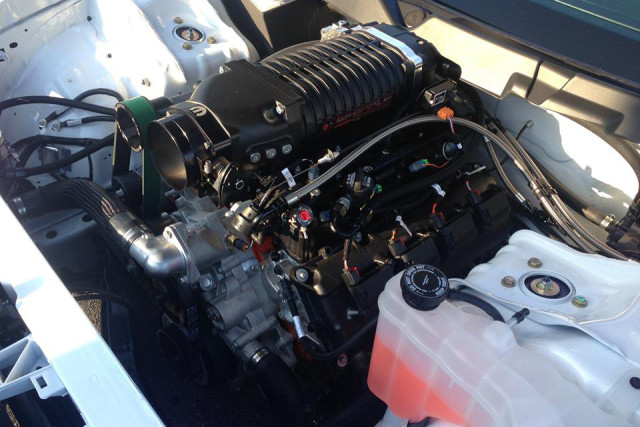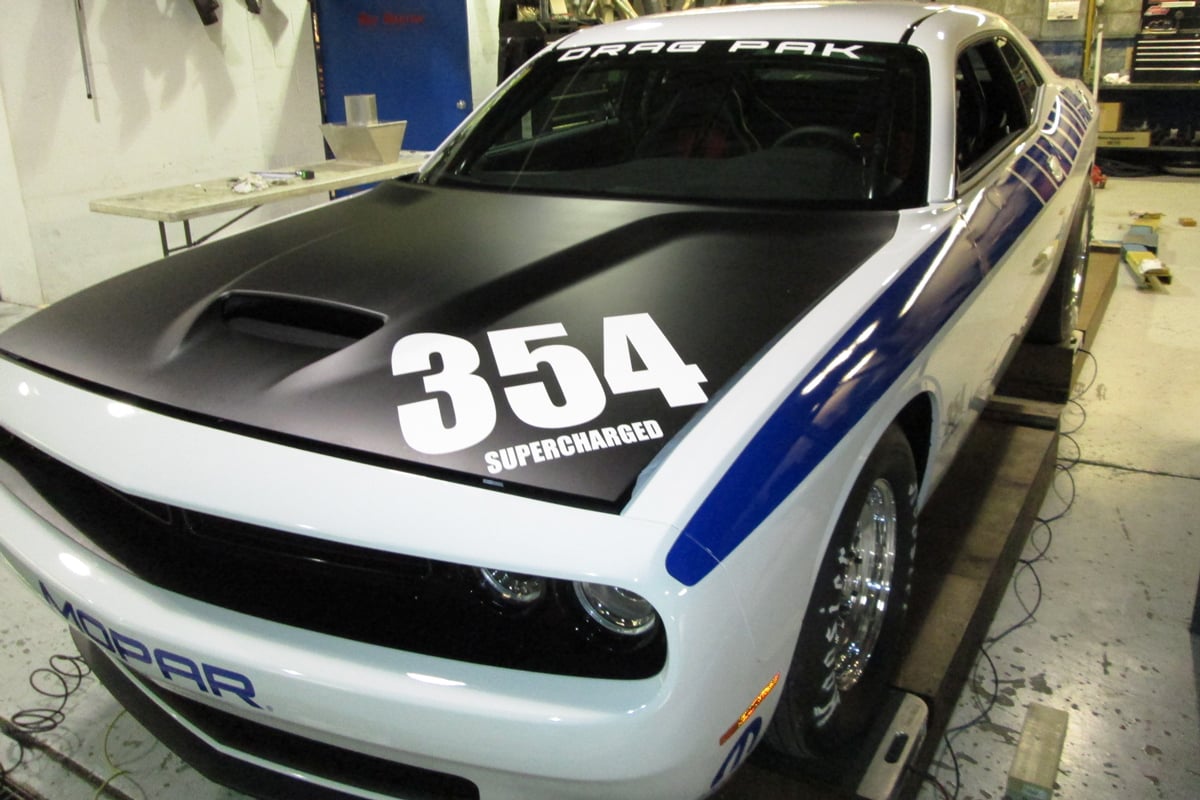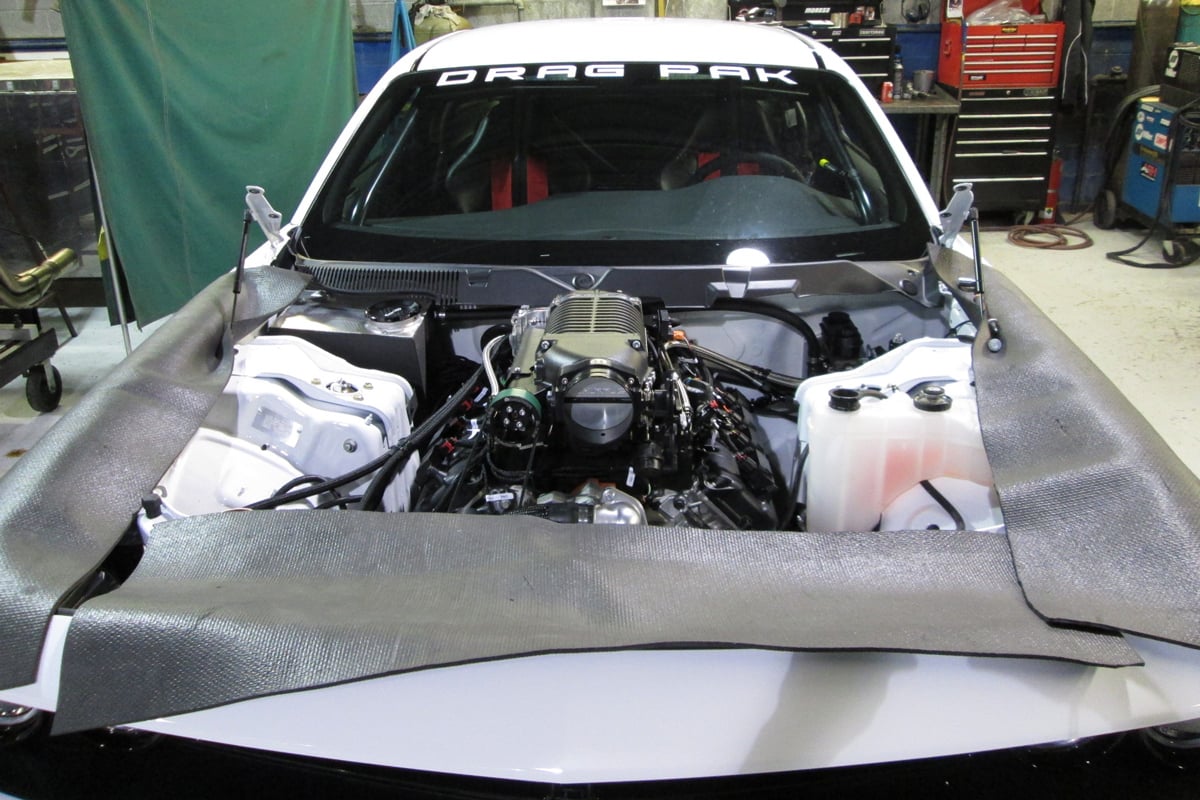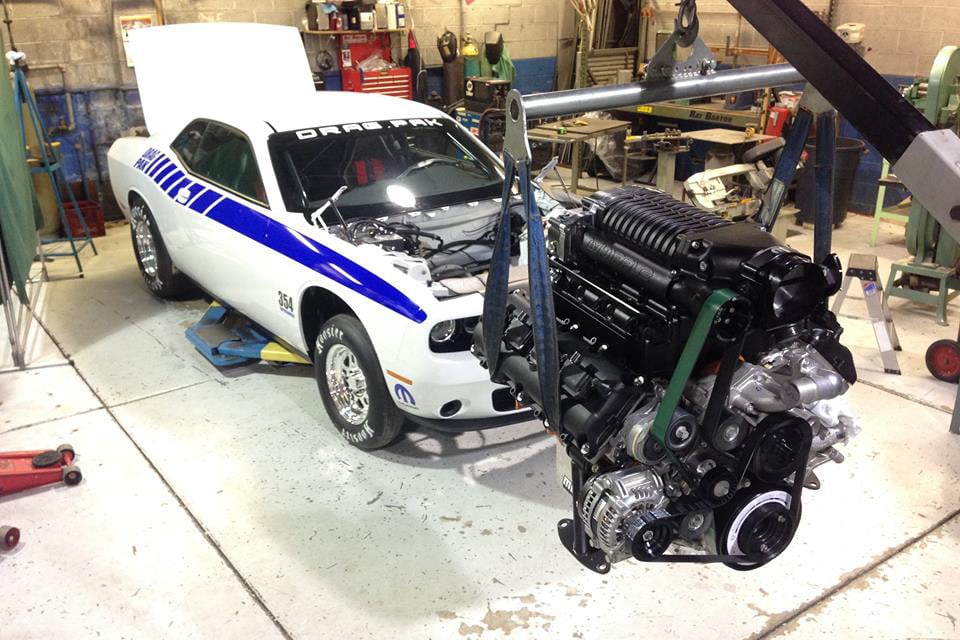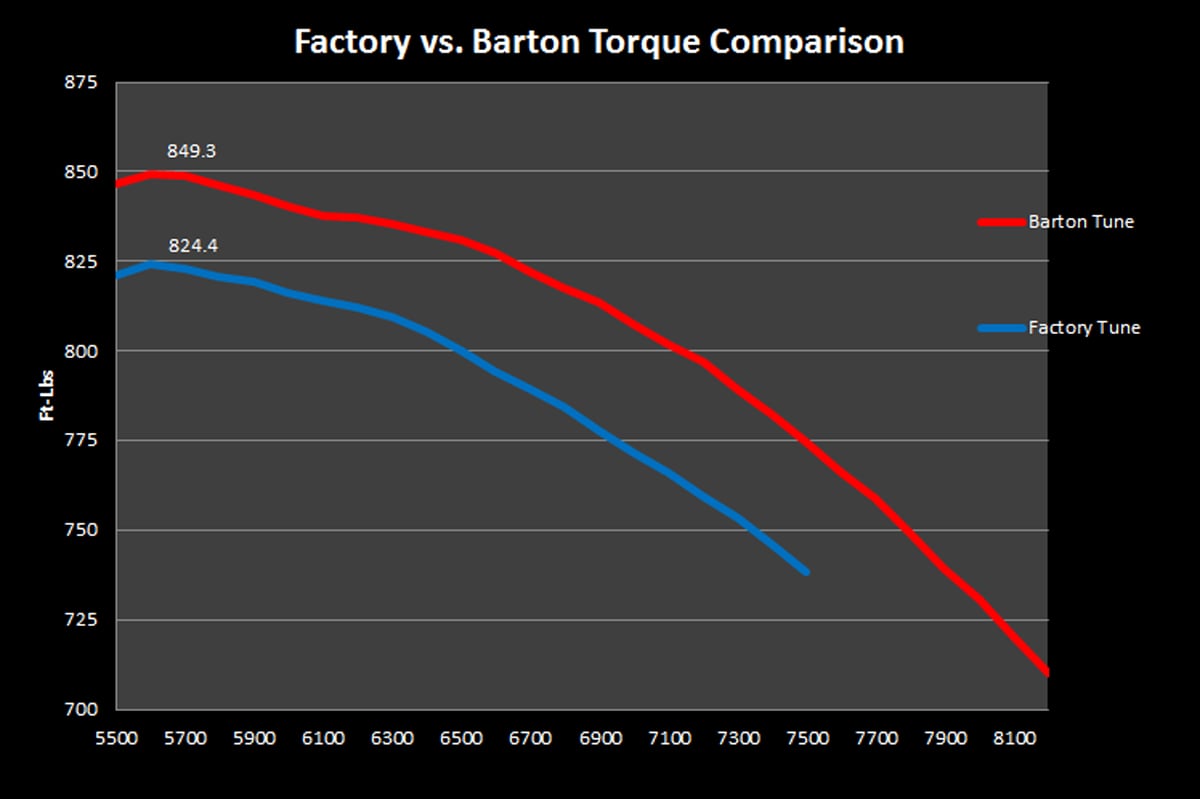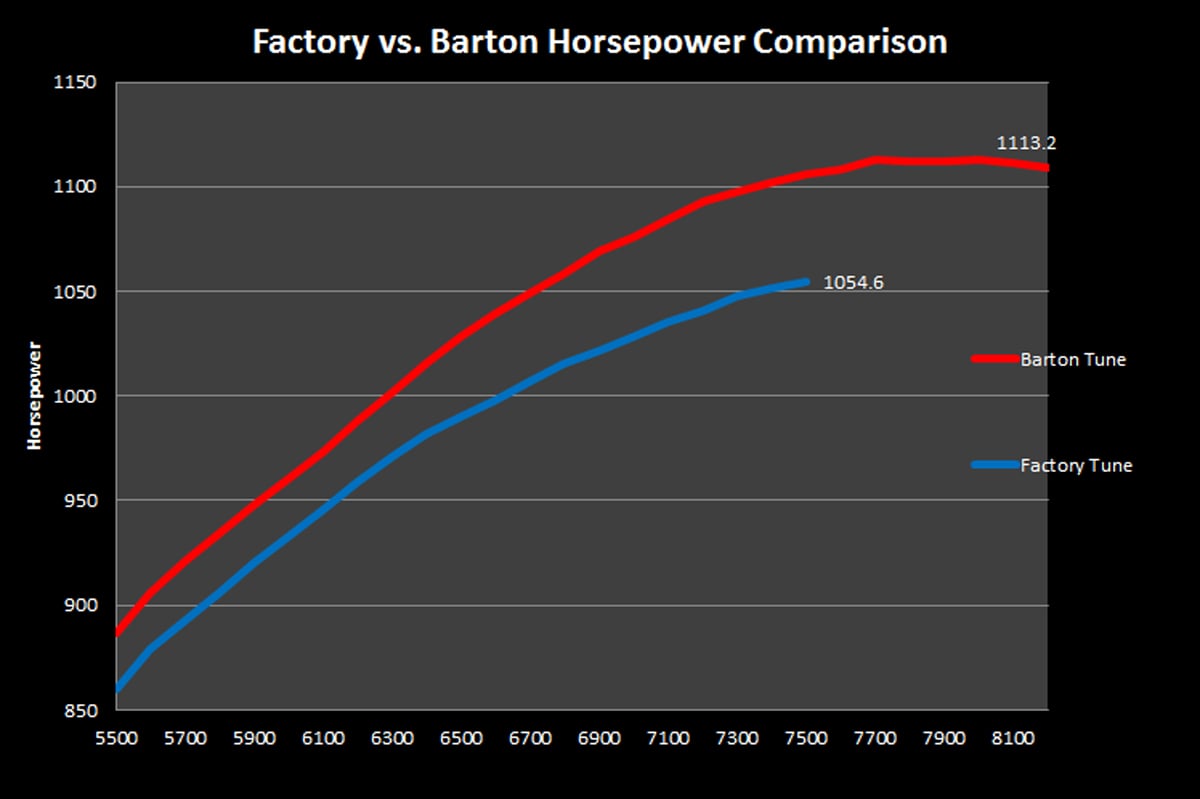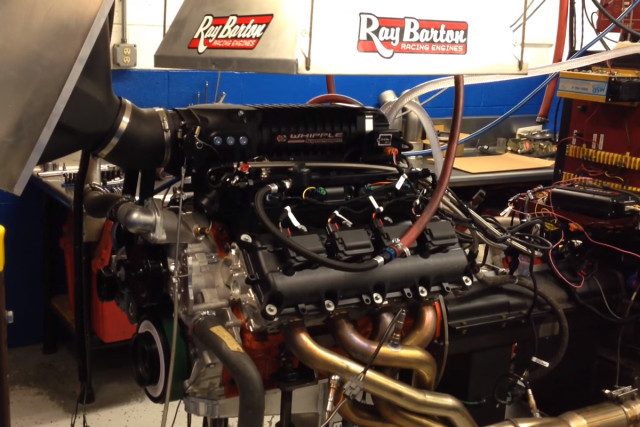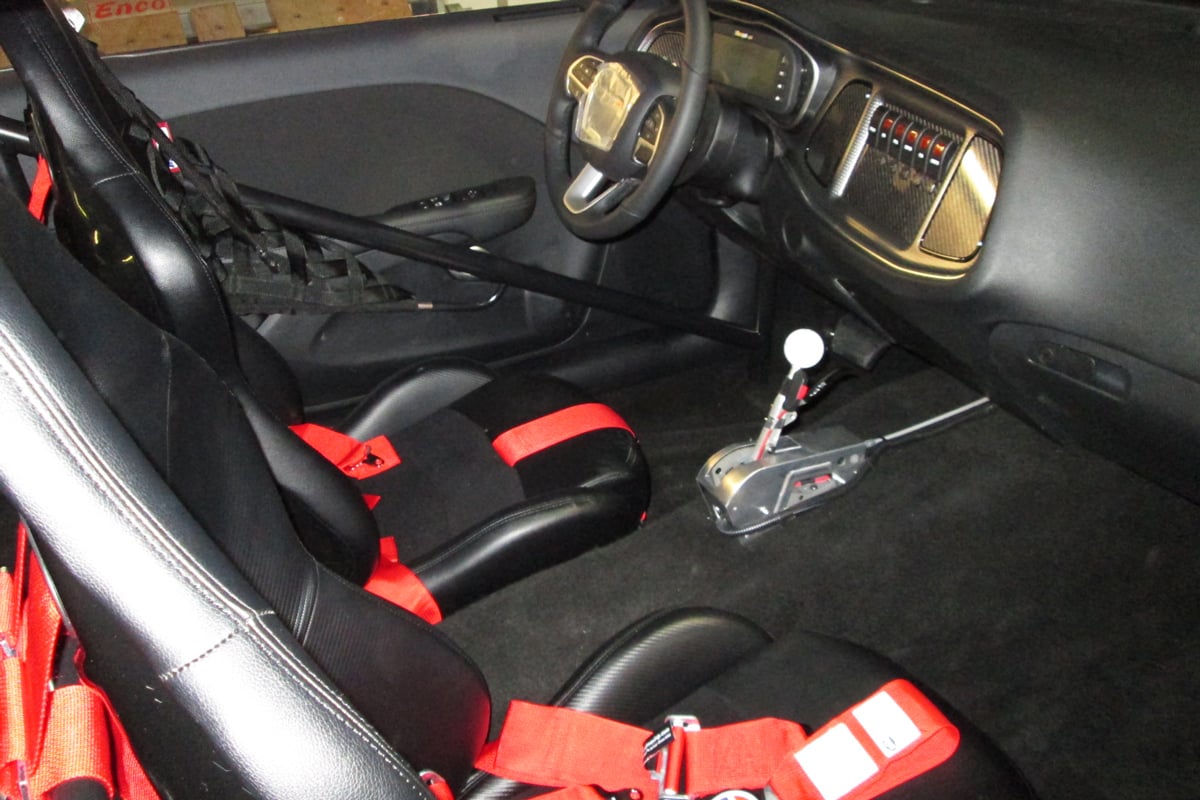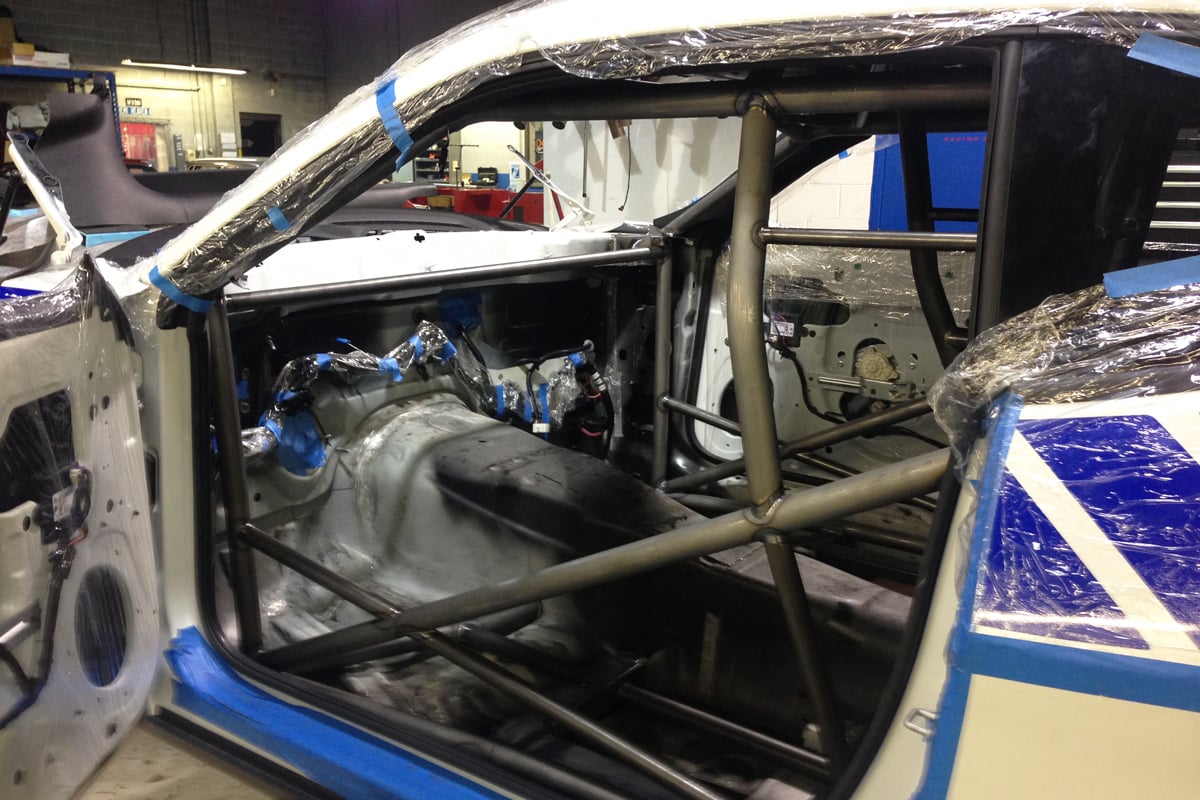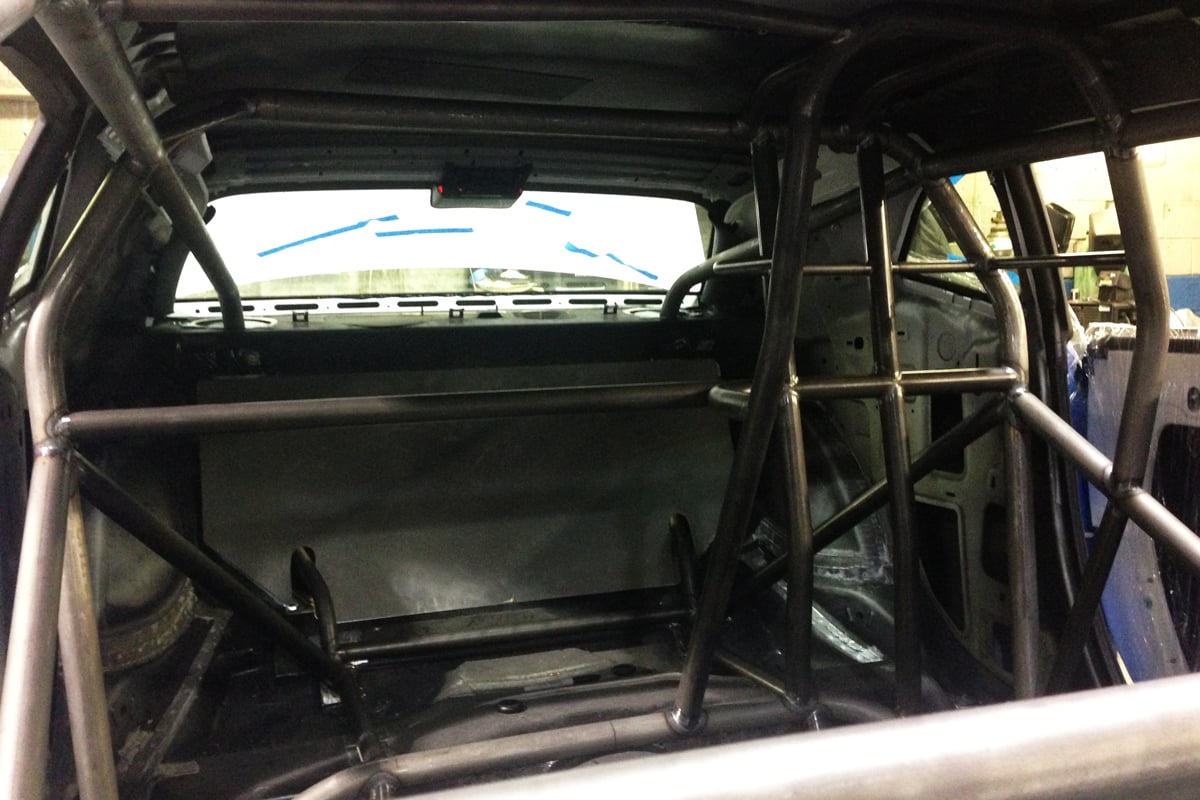In early December, Chip Hoynitski’s 2015 Drag Pak Challenger [1] rolled into Ray Barton’s shop [2] in Robesonia, PA. The mission: strip it down and upgrade whatever is needed to be competitive in the NHRA Factory Showdown Series.
This particular car came from the factory with the 354 race-prepped Gen III Hemi. Atop the engine sits a Whipple supercharger and Big Stuff engine management system. This is a factory first for Mopar, Upon arrival, Barton yanked the engine from the car and installed it on their in-house dyno. Out of the box the engine was twisted 7500 RPM and pumped out a whopping 1,054.6 horsepower.
Next, Barton wanted to see if he could squeeze any more power by making some simple adjustments. Adding timing and leaning out the air-fuel mixture gave the otherwise unmodified engine a gain of 56 hp at 7,500 RPM. Peak power output was 1,113.2 horsepower at 8,000 RPM and 849.3 ft/lbs of torque. “That was all just in the software,” states Barton. Now that Barton had a solid base-line to work from, the engine was stripped down and the real work began.
The Gen III Hemi is pulled from the car and ready for some base-line testing.
What type of work? “Redoing the valve job; boring the block .060 over; different pistons, maybe try a different ring pack in it; different camshaft,” Barton explains. “There’s some other stuff, but I can’t tell ya,” he laughs. “Basically we’re blueprinting the engine and taking everything to the max, within the legal limits; but you push everything as far as you can push it.”
Torque and Horsepower graphs compare the factory tune with Barton's base-line tune.
The compression ratio for the 354 rolls out around 12.5:1 from the factory. Since the car will be running in the stock class, no adjustments will be made there.
“In stock you’re not allowed to change any of that stuff. They CC the piston and the block. They CC the chambers and all that stuff so you’re not allowed to modify anything like that. But just going .060 over is like another ten cubes so that should be 30 horse in itself.”
Barton is confident in other modifications making gains as well.
“A different ring pack, I think we can make some more power there; and the camshaft, too,” says Barton.
This has been a winter project for Barton’s shop along with his son Dave’s Camaro which will be debuting at the same time as the Challenger. The process takes time to make sure everything is legal for the stock class.
“I’m waiting to have my pistons approved by NHRA. We get our own pistons made. I don’t use the stuff that comes in the motor. You have to get a piston made, then you have to submit it to NHRA, and have it approved, and then they put it on their approved list. Then anybody that’s running that combination can either buy the piston from you or go through the same [process] that I’m going through.”
That process alone takes about one month to complete.
The factory installed cage (left) was removed and a funny car cage was installed.
The chassis is also going through some changes while they are waiting on the piston package to be approved.
“To go quicker than 8.50 [the cage] has to be certified for 7.50. So that required a whole new roll cage with a funny car cage in it,” Barton explains.
Jonathan Allegrucci will be aiming the Mopar rocket down the quarter-mile in the stock and super stock divisions. We look forward to seeing the final product debuting alongside Dave’s Camaro this spring. Keep your eyes peeled for a follow-up article covering the final results.
